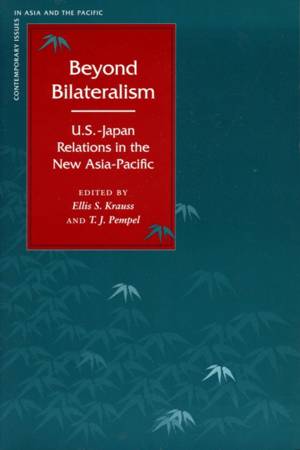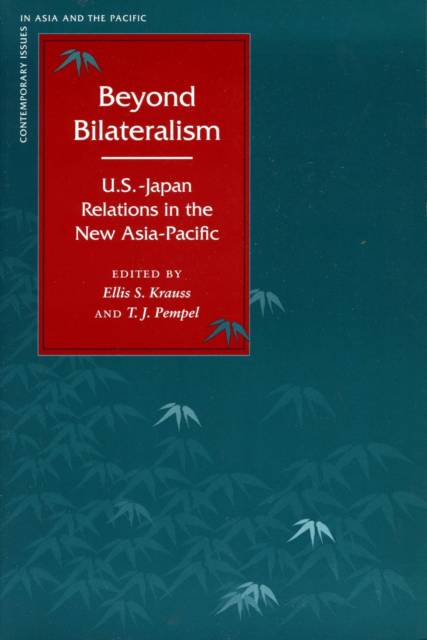
- Retrait gratuit dans votre magasin Club
- 7.000.000 titres dans notre catalogue
- Payer en toute sécurité
- Toujours un magasin près de chez vous
- Retrait gratuit dans votre magasin Club
- 7.000.0000 titres dans notre catalogue
- Payer en toute sécurité
- Toujours un magasin près de chez vous
Beyond Bilateralism
U.S.-Japan Relations in the New Asia-Pacific
Description
This is the first comprehensive analysis of the ways in which changes in the geopolitical context have altered the nature of the long-stable U.S.-Japan relationship: much of what had once been a bilateral and relatively exclusive relationship has been transformed in the past two decades. The authors present eleven case studies of important domains--ranging from increased flows of private capital to international security concerns to the growing importance of multilateral organizations--in which the relationship has been altered to a greater or lesser degree.
Individual chapters present new ways of understanding international financial flows, U.S.-Japan trade relations, and U.S.-Japan manufacturing rivalry. Others present very cogent synthetic analyses of the changing context of U.S.-Japan relations. Together they provide an account of the bilateral, regional, and global institutions--political, military, and financial--that dominate the geopolitics of U.S.-Asia relations. Although written to a consistently high intellectual level, the chapters in this timely volume are intended for a nonspecialist audience and will be useful to practitioners in business and government, as well as to students and teachers.
Spécifications
Parties prenantes
- Editeur:
Contenu
- Nombre de pages :
- 448
- Langue:
- Anglais
- Collection :
Caractéristiques
- EAN:
- 9780804749091
- Date de parution :
- 11-11-03
- Format:
- Livre relié
- Format numérique:
- Genaaid
- Dimensions :
- 173 mm x 221 mm
- Poids :
- 734 g

Les avis
Nous publions uniquement les avis qui respectent les conditions requises. Consultez nos conditions pour les avis.





